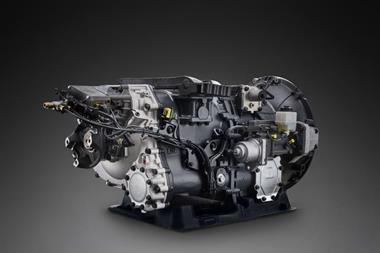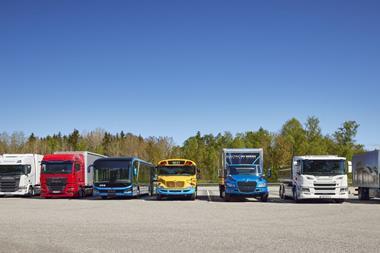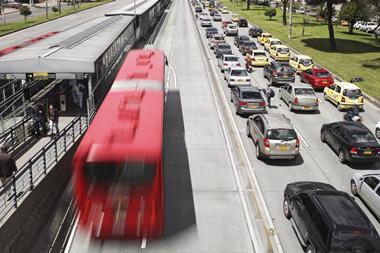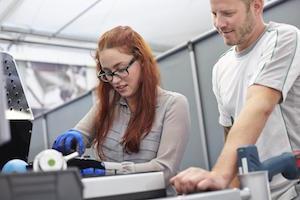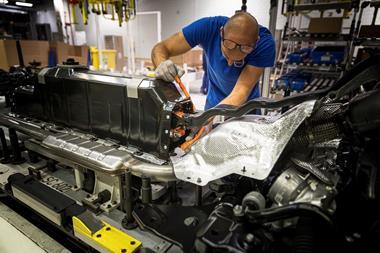
Sharon Clancy talks to two European truck OEMs about their manufacturing operations
Like most truck manufacturers, Scania has global standards not just for most components and parts but also for working methods and quality, and environmental standards at all its plants. Likewise, Leyland Trucks, in the UK, is part of US-based Paccar global manufacturing centres and consistently wins awards for quality.
Environment and safety top the list of priorities under the Scania Product System, a method-based way of working with continuous improvements that Scania started to implement almost twenty years ago, explains Thomas Karlsson, senior vice-president and head of chassis and cab production. “Some people might wonder why this comes prior to quality, delivery and cost, but the fact is, that if you focus on safety and environment, the quality gets better as well as the delivery precision. So eliminating waste by working lean is closely related to sustainability and creates a win-win with for the environment, society and the company and its people. By reducing energy, you also reduce the carbon footprint and the cost.”
Scania’s production structure consists of one European and one South American production leg which each manufacture core components – cabins, frames, axles, engines and gearboxes. These are then used for final assembly operations at three European premises (in Sweden, the Netherlands and France) and one in South America (Brazil).
In other countries, such as in Narasapura, India, Scania has established Regional Product Centres (RPC) for assembling, bodyworking and fitting out locally adapted vehicles. This moves the factory closer to the customer, resulting in shorter delivery times and a major improvement in customer support. KD kits are sent to these centres from either the European or South American production units.
“For Scania, there is no contradiction between local body building and a global product range,” explains Karlsson. “Where Scania might differ from most of its western European competitors, is that the company doesn’t enter emerging markets by competing with the domestic manufacturers. We offer western European products with high technological content to professional operators with high demands on utilisation, uptime and low operational costs. That’s why you don’t see any joint ventures between Scania and domestic makes. A Scania is a Scania wherever it’s delivered.”
From an engineering point of view, says Karlsson, there is currently no reason to develop a component manufacturing presence in new markets. “According to our long-term plan, today’s technical production capacity of about 100,000 vehicles annually will be expanded to 150,000 within the current European and South American production structure. Some additional final assembly units may be established in markets or in regions where annual vehicle sales reaches around 10,000 units – our sales volume in Russia, for example, is getting closer to this level.”
Other truck makers have opened full production plants in countries where they expect sales to grow. Daimler, for example, has several subsidiary companies and JVs in which it has the majority stake. In 2012, Daimler India Commercial Vehicles opened a state-of-the-art production plant for BharatBenz trucks in Chennai. The €700 million investment includes a manufacturing plant as well as R&D facilities. The plant has an initial capacity of 36,000 units a year, with potential to ramp that up to 70,000. Some truck models are based on the Mercedes-Benz Axon platform; while others are built on the Mitsubishi Fuso Canter series (Daimler also has a stake in Mitsubishi.).
The plant is one of only thee Daimler plants worldwide to combine truck assembly and major component production at a single location. “Our new plant shares Daimler’s stringent quality standards with its sister plants around the world and is unique at the same time – it is the only Daimler plant in the world that houses products which combine Indian engineering with German and Japanese DNA under a single roof, ” said Dr. Dieter Zetsche, chairman of the board of management, Daimler AG. Local content is 85% and 40% of suppliers are located within a 40km radius of the plant.
Continuous improvement, continuous savings
Six Sigma was first introduced at Leyland Trucks by its parent company PACCAR at the end of 1998 and ‘lean’ has become an integral part of Leyland’s continuous improvement journey. Over 250 of its approximately 1,000 employees are trained in Six Sigma and over 2,000 improvement projects have been implemented. These projects typically return savings of over 1% of total revenue, each year.
But Six Sigma is more than just a methodology or set of tools that delivers specific projects, explains Harry Levy, Six Sigma manager at Leyland Trucks. “It is really a mindset which permeates the entire organisation, which expects fact-based decision making and true root-cause analysis of problems at all levels and at all times.”
Over the last 10 years, the continuous improvement programme supported by the principles of Six Sigma and lean production has led to step-change improvements in all of Leyland’s core Key Performance Indicators. In-line and end-of-line quality levels have each improved by 85%; efficiency (measured as man-hours per truck) has improved by 35% (despite increases in model and feature complexity over the same period); inventory turns have increased by over 200%; and on-time delivery has improved to 98%.
Six Sigma is also an integral tool in Leyland’s relationship with its suppliers. Leyland and fellow Paccar Company DAF Trucks, which largely share a supply base, have trained over 100 Six Sigma Belts in 150 supplier companies. In total, including suppliers who run their own Six Sigma programmes, well over half of tier one suppliers practise Six Sigma techniques. Joint Leyland/supplier projects are common as part of a Cost Management Partnership programme, which requires suppliers to identify and implement process improvements in their own operations to the benefit of both parties and also as corrective action projects to identify and eliminate the root causes of quality defects.
Six Sigma is not a tool set used exclusively by office-based practitioners, points out operations director Peter Jukes. “All shopfloor team leaders have had training in lean techniques and, supported by a small team of specialists, are encouraged to lead improvement projects in their areas, ranging from 5S exercises to layout changes to minimise movement, waste and defect investigations to understand and eliminate defects.”
High Impact Kaizen Events (HIKE)
Normally, Six Sigma projects form part of the belt’s everyday work. Sometimes, however, the best progress will be made by a full-time dedicated resource being applied to the task – a HIKE (High Impact Kaizen Event). “Running a HIKE will typically present the challenge of freeing up the time of the necessary participants for the duration of the event, and because a number of people are going to be working full-time on this one project, preparation ahead of the commencement of the HIKE is paramount, to ensure best use of their time,” explains Harry Levy. “But once these hurdles are overcome, the benefits can be enormous. Team dynamics are massively improved when the team knows they will be working together with just one objective for the duration of the project.”
An expert practitioner will act as coach to the team, suggesting the right lean tools to be used at the right moment. The project leader, however, will be someone who owns the process under consideration and who therefore is looking for a solution and will be left to manage that solution once the project team has disbanded.
The most recent HIKE on the Leyland site was on the receiving deck in the Paccar Parts after-market parts distribution centre where there were bottlenecks in parts processing.
The multi-functional project moved peripheral activities to different parts of the warehouse, installed additional roller-racking and re-laid out the area to improve process flow. As a result, productivity in the area (measured in lines processed per hour) was increased by over 30%.































